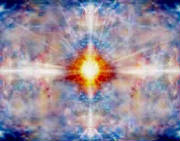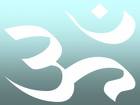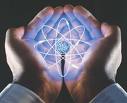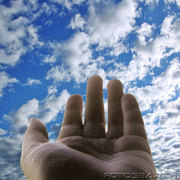|
|
Reiki - Universal Life Force - Ever Evolving . Reiki has a deep unique history. Although the Reiki energy itself goes back over 2500 years, as evidenced in Sanskrit Sutras, and the writings of Tibetan Monks and Enlightened Masters, the history of Reiki at taught today is much more modern. It begins in the early 1900s.
Usui Mikao was the founder of what is known as the system
of Reiki today. No-one will ever
know the full story of Usui's life. The remnants that still exist can be pieced together but they can`t provide a totally
clear picture. But neither do we need to know his full history. We know he was a man on a spiritual quest ...
and that he found Reiki. Through his efforts to pass on his insights and knowledge the Reiki connection can
be shared by all. . Usui
Sensei's Teachings by BRONWEN AND FRANS STIENE on DECEMBER 30, 2003 There has been a great deal of discussion in the Reiki community over the last couple of years about ‘new' discoveries within the system of Reiki. These discussions have focused on a number of topics including Mikao Usui's life and Mikao Usui's teachings - all in relation to what is taught today as the system of Reiki. This article deals with two different forms that many students of the system of Reiki today consider to be linked. The first form comprises information provided by living students of Usui sensei about his teachings. The second is known as the system of Reiki around the globe today. By looking at the elements that comprise Usui sensei's teachings in contrast to the system of Reiki it is possible to see a link between these two forms with this link being Usui sensei himself. The teachings themselves are quite separate in intention and design. Suzuki san was born in Japan in 1895 and was the cousin of Usui sensei's wife, Sadako Suzuki. At the age of 20 she began her training with Usui sensei. From 1915 to 1920 she trained formally with him and thereafter, informally, until his death in 1926. Suzuki san is still alive today as are 1 0 other students of Usui sensei. Suzuki san is a practitioner and teacher of Usui sensei's teachings. To practise the teachings of Usui sensei, as taught by Suzuki san, is to focus on self-realization. Healing others is a natural side effect of working in this manner but is certainly not emphasized within the form. Not only is healing not a major element of the form but the approach to healing differs from the techniques used in the system of Reiki. The teachings of Usui sensei and the system of Reiki take the student on paths that are unique to each form. These paths are not the same. One of the most important aspects of what Suzuki san teaches is the precepts, but these are not the same as the precepts practiced by the system of Reiki and have evolved from their own individual context. The teachings themselves are taught one-on-one and take many, many years to learn with the student moving from one understanding to another with the teacher guiding the practise. The symbols are not used, with the exception of 1, and the teachings are based on the student's personal development through the use of specific meditations. This is a spiritual practise that focuses on discovering one's own true essence. Echoes of Usui sensei's teachings can be found in the system of Reiki - working with energy to heal, the precepts and reiju - but none of these aspects are dealt with in the same manner. To understand how the one form developed into the other it is believed today that Usui sensei might have developed his teachings with two different objectives in mind. The earliest teachings ( approx.1912-1926), focused on personal spiritual development, were taught until his death while the later teachings ( approx. 1922 - 1926) were developed expressly for healing. Today the system of Reiki is a business for many who use their teaching expertise to guide students into an awareness about energy and healing work. Usui sensei's teachings are not a business. They focus on personalwork with ongoing study taking place between a teacher and a student. Usui sensei's teachings, as taught by Suzuki san, have no name but can be seen as a Method of Spiritual Practice that was in fact Usui sensei's life. The names Usui Teate or Usui Do are just that, names. Individuals have used them to represent elements of the teachings but by using these terms one's view of the teachings can become restricted. Many Reiki practitioners today want to see Usui sensei's teachings exposed to them as they feel that it is their right to know about this information. True, that historically it is beneficial to understand the origins of a practise such as the system of Reiki but it is also true that these teachings must be respected for what they are - unique and separate to the system of Reiki. These teachings have their own structure and that is not the same as the system of Reiki. It cannot be learnt within a day or two or even a year, there are no manuals or course guidelines available and it cannot be picked up over the Internet. It is for those dedicated to their practise, seeking personal enlightenment.
. THE USUI SYSTEM OF REIKI: USUI SHIKI RYOHO . Usui Shiki Ryoho (the Usui System of Natural Healing), known as Reiki, is a form of healing and spiritual awakening, received and developed 100 years ago by a Japanese man, Mikao Usui, and brought to the West via Hawaii in 1937.It is passed on from one person to another through specific initiation rites, teachings and defined forms of practice. The Japanese word reiki can be translated as 'universal or spiritually guided life force' and the Usui System is a way of working with reiki for healing of self and others. The word healing is used in the sense of regaining harmony and wholeness and Usui Shiki Ryoho addresses the whole person, physical, emotional, mental and spiritual. The integrated way of Usui Shiki Ryoho has four Aspects: healing practice, personal development, spiritual discipline and mystic order. For the gifts of the whole to be realised they need to be held in a balanced way, not allowing any to overshadow the others. The Aspects spring from a central core of practice and philosophy called the Form, comprised of nine Elements, each bringing unique lessons. The combination of all the Elements and Aspects and their inter-relationships creates the system which has a proven, predictable capacity to take people along a profound path of healing, growth and spiritual deepening. The importance and deeper meaning of the elements and aspects and the whole system is mainly beyond words and gradually unfolds through personal experience. Elements and Aspects The Elements and Aspects are summarised below, but please bear in mind that it is just a rudimentary attempt to convey something that is spiritual in nature and can only really be embraced through a connection with the essence behind the intention that such Elements and Aspects are merely the words used to name a deep and profound experience and knowing.  Four Aspects
. Healing Practice: Usui Shiki
Ryoho has as its basis a hands on healing practice for regular self treatment and a form of treatment which helps others to
use universal life energy for their own healing. Personal Development: Giving and receiving Reiki through Usui Shiki Ryoho stimulates a process that brings
a clearer sense of one's own true self and humanity, with a deepening self love. Spiritual Discipline: Inherent in the regular practice of the Form is the awakening
of a spiritual practice, spiritual development and awareness of the sacred in daily life. Mystic Order: Practice of Usui Shiki Ryoho brings mystic experiences and a sense of connection
and common purpose with others following this path.
Nine Elements
. Oral Tradition: The ability to practice Reiki is received only through face
to face relationship with a Reiki Master, and involves verbal and non-verbal communication and an energetic transmission. Spiritual Lineage of Usui Shiki Ryoho is Mikao Usui, Chujiro Hayashi, Hawayo Takata
and Phyllis Lei Furumoto. The living lineage bearer embodies the essence of Reiki and carries out a central role for the Reiki
community which includes leading, teaching, and inspiring. History: This is shared in Reiki classes as part of the oral tradition. Although it tells the origin and
key events in the nurturing of Reiki, it is told not as information but as a lesson containing parable. Initiation is the ritual passed down from Reiki Master to Master. When performed with a student,
this ritual results in the capacity to practise Reiki. Symbols: There are three symbols that are presented to the student in second degree classes as received
from Mikao Usui, together with a specific ritual and form of practice. They are energetic keys which access communion with
self, others and the mystery of life. Treatment: The basic treatment of self and others is the foundation practice of the Form and is simple and clear, with hands
held still for several minutes in a sequence of positions on the head and body. Form of Teaching: This covers both the energetic and physical structure of the
classes. First Degree is taught in four 3 hour sessions, with an initiation in each session. Students are introduced to the
elements and aspects of Reiki and learn how to treat themselves and others. Second degree takes people deeper into the System
and requires greater commitment. Practices taught at First degree prepare the student for this next step and it is recommended
that there be a minimum of three months between the classes. There is one initiation and the student receives the three symbols
and learns how to use them as sacred tools. Mastery
is for those who realise they have a calling to accept this far greater, lifelong commitment to the practice and teaching
of Usui Shiki Ryoho and are willing to take on the challenges and responsibilities this involves.
 The Ethos of Reiki Pathway Our relationship with Reiki, the practice, the attunements, the personal development, is fundamentally
to do with intuitive guidance and intention. There are processes and do`s and don`ts to
learn, but rather than relying on rigid rules to maintain integrity, we should adopt a continuous healthy
humility and allow our understanding and connection to blossom from the centre of our being, not the mind. In my opinion, the best Reiki Master Teachers will focus on conveying
the holistic and multi faceted nature of the energy, and on leading and encouraging their students to build a deep personal
relationship with Reiki on all levels. Do
this and the Reiki energy itself will flow freely and be the directing force. The flexibility
of the Usui system bears testament to the personal nature of our relationship with this universal energy.
The Universe is evolving, we are of
the Universe and so evolvement through self awareness is inevitable for all those who open up to their potential. Reiki is
here to support and guide you on your journey... and so are we :)
Caroline
Rowlands
 Some Reiki Myths Over time, a lot of inaccurate information about Reiki has ended up being published in books and on web sites, and propagated as the half-truths and inaccuracies have been passed from teacher to student in different Reiki lineages, so what I thought I would do is to have a look at various web sites and see what the most common inaccuracies were. I have collected below a dozen ‘Reiki myths' and hope what I say below will shed a little light on the situation. (1) Reiki was invented in the 1870s Reiki's founder, Mikao Usui, was born in 1865 and died in 1926. In 1870 he was five years old, and is unlikely in the ten year period before his 15th birthday to have developed the Reiki system! Reiki actually came into being in the 1910s and was taught by Usui until his death. (2) Mikao Usui was a Doctor Although Mrs Takata - the lady who first taught a version of Mikao Usui's system in the West - taught people that Mikao Usui was a Doctor, she did this to emphasise that Usui was a professional man, a person of some standing, and she did this as part of a longer allegory that she taught as the ‘history of Reiki'. In Japan he would have been referred to by his students as Usui "Sensei", with the word ‘Sensei' meaning something like ‘revered teacher'. (3) Mikao Usui was a Christian teacher Again this is part of the allegory that Mrs Takata taught, a ‘history' that was only very loosely based on historical fact, something that she taught in order to make Reiki acceptable to a potentially hostile, and largely Christian, American audience (she was teaching shortly after WWII, remember). Mikao Usui was not a Christian and did not teach in a Christian school in Japan. He was a Tendai Buddhist. (4) Reiki is a forgotten Tibetan Buddhist healing method Reiki has nothing to do with Tibet and Mikao Usui did not ‘discover' Reiki by reading ancient Tibetan Buddhist sutras. Usui Sensei would not have had access to Tibetan Buddhist writings in Japan in the 1900s and he did not need to have, since Reiki draws on the various Japanese traditions that he was exposed to: Shinto, Tendai Buddhism, Shugendo (Mountain asceticism) and martial arts. In fact Buddhism had already arrived and become established in Japan long before it arrived in Tibet. As I understand it, Buddhism did not pass from Tibet to China to Japan. Japanese Buddhism originated in China, and eventually Buddhism arrived in Tibet from two sources: from China and from India. The only connection between Tibetan Buddhism and Japanese Tendai Buddhism is that, both being forms of Buddhism, there will be general similarities between the different traditions. Reiki is not a Tibetan Buddhist thing. (5) Reiki came into being after Mikao Usui saw symbols in bubbles of light after a 21 day period of fasting and meditating on Mount Kurama This is another part of the fable that Mrs Takata taught. While it is true that Mikao Usui carried out a meditation on Mount Kurama, it was not quite the "disappearing up a mountain and coming down three weeks later with the Reiki system" that was implied by Mrs Takata's story. Mikao Usui did carry out a three week formal meditation process called the "Lotus Repentance Meditation" which involved daily meditations on the mountain (and going home again at the end of the day), but he had already been teaching his spiritual system long before he carried out the first of these meditations; in fact, he did this meditation five times during his lifetime. Usui's meditations will have contributed to his spiritual development but they did not lead to a ‘eureka' moment that brought the Reiki system into being. The Reiki symbols were taught only to a few of Usui Sensei's students right towards the end of his life. Most of his students never got to see or work with a symbol because they were not a part of his system. So Usui Sensei had been teaching his system successfully for a long, long time before he and his senior student Toshihiro Eguchi jointly introduced the symbols, basically for the benefit of the Imperial Officers. (6) Reiki treatments should not be given to people with pacemakers This is just one example of a whole load of nonsense Reiki ‘contraindications' that wash around the Reiki movement and are passed on from teacher to student ad infinitum. There is not a shred of evidence, either anecdotal or otherwise, to suggest that pacemakers are adversely affected by a Reiki treatment and Reiki can safely be used to treat people with pacemakers. Reiki can be taught safely to people with pacemakers too. (7) Reiki should not be given to pregnant women This is another nonsense contraindication that has no basis in fact. And in fact if Reiki were a problem for pregnant women then we would not be able to treat any women of childbearing age since it is possible to be pregnant without knowing it yet. So Reiki is safe. Reiki treatments can be given to pregnant women and pregnant women can be attuned to Reiki. (8) Reiki should not be given to people with cancer Oh dear, here is another nonsense contraindication. The idea here - again completely unsubstantiated by any evidence at all - is that Reiki will ‘feed the cancer'. There is a variation on this Reiki myth which suggests that a particular Reiki symbol, when used, will ‘feed the cancer'. Let's think about this for a moment: everyone has cancer cells in their bodies all the time. It is normal for some cells to go haywire and our immune system spots the defective cells and eliminates them. If Reiki is dangerous for people with cancer then we should not actually be able to treat anyone at all, since everybody has cancer cells in them. In fact being attuned to Reiki would be akin to a death sentence! Reiki is safe and we can safely ignore the endless stream of Reiki contraindications that wash about the place like so much bilge. (9) To do Reiki, you need to have a spirit guide No, this is not correct. Spirit guides or Reiki guides have nothing at all to do with the practice of Mikao Usui's system. You can practise Reiki happily while having no contact with any ‘spirit guide'; you can practise Reiki quite happily while not even believing in spirit guides. What has happened is that Reiki teaching in many lineages got caught up with the New Age movement, and lots of New Age ideas and principles and practices ended up being mixed in with Reiki teaching over the years. If you want to investigate the idea of spirit guides then I have no objection, but such a thing is not Reiki and does not feature on any of our Reiki courses because it has nothing to do with Reiki. (10) Reiki involves using crystals Not really, no. This is another New Age practice that has attached itself to Reiki teaching in some lineages. Do stuff with crystals if you like but you don't need to use crystals to treat people (or yourself) with Reiki. Crystal healing and Reiki healing are two separate things, though some people like to experiment, and that's fine. (11) Reiki involves working with Angels No: another New Age idea that has ended up being bundled together with Reiki on some courses. An interesting subject , of course, but the study of Angels has nothing to do with Mikao Usui's system and I do not believe that it should feature on Reiki courses. (12) There is a ‘Grand Master' of Reiki As I understand it, to make a distinction between Mrs Takata (the lady who introduced a version of Usui's system to the West) and the Masters that she initiated, her Master students started to refer to her as a ‘Grand Master', and this ‘office' is now seen as being occupied by Mrs Takata's granddaughter, Phyllis LeiFurumoto. Reiki Masters who are members of the "The Reiki Association" in the UK, and in the various "Reiki Alliance" societies in different countries, tend to defer to her as being the standard-bearer of Mrs Takata's system, the one true way. It is clear, though, that there never was an office or a title of ‘Grand Master' in Usui's system: such an office or title was never envisaged and never used. So the title "Reiki Grand Master" has no basis and means nothing. Anyone can call themselves such a thing if they want to puff up their ego a little. I would avoid a Reiki ‘Grand Master' like the plague: Reiki practice should involve a little humility I believe. You may come across a few people who are calling themselves Reiki Grand Masters, in the UK and in other countries. The title is meaningless. Taggart King
|


